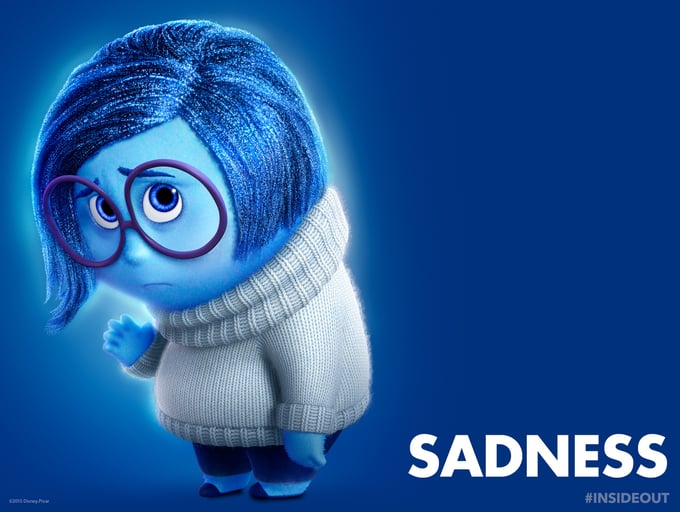By: Rana el Kaliouby, Co-Founder and Chief Strategy and Science Officer
Just this week we had an Affectiva outing. A bunch of us, along with our kids, went to see the new Pixar movie #InsideOut. I’ve been waiting for this movie to come out ever since I first heard about it more than a year ago.
You see, I have been studying, simulating, implementing, measuring and analyzing emotions for the past 15 years. When I first started this work, emotions were on the fringe. People would often think of our emotions as a nuisance. “Why do we need them anyhow? Let’s just focus on the cortex and cognition.” Of course, years of research have now shown us the importance of emotions and these findings are causing a mindshift. Slowly, emotions are becoming mainstream. I found it incredibly exciting that finally, in the year 2015, Pixar debuts a movie that dives deep into how emotions drive our actions, regulate our health and well-being, and govern the relationships we have with those around us, especially those closest to us. Not only that, the way the emotions are depicted vying for control in 11-year-old Riley’s “headquarters” is just brilliant.
Here are some things that struck me:
IT’S COOL TO TALK ABOUT EMOTIONS!
I think that perhaps the greatest value this movie brings is that it makes it “cool” to talk about emotions and feelings. Since this movie has come out I have noticed in the vast media coverage and in conversations I have had with friends and colleagues, that it is now normal to talk about the role of emotions — how emotions shape who we are and drive our behaviors. Inside Out the movie is giving kids a new way to articulate their many frazzled emotions, and empowers the adults around them with language that kids can relate to: “Oh, oh, I sense Anger is taking over now.” “Who is in control now? Sadness or what?” ”What happened to Joy?” Kids love this movie and are talking about emotions: my middle schooler and her friends commented on how the young dude at the end just completely freezes at the sight of Riley — hilarious!

Drawing by Tessel van Schaaik, 9 years old
ALL EMOTIONS COUNT AND SADNESS IS WAY MORE IMPORTANT THAN YOU THINK
We tend to focus on being happy. It appears that we should lead our lives always seeking happiness. This movie, however, shows how all our emotions matter, the entire spectrum of them, and that they work together to keep us healthy and balanced and safe. In our culture today, being sad is not something people are encouraged to share, and in fact, increasingly more people are struggling and suffering in silence. What this movie shows beautifully is that Sadness is as important, if not more important, than Joy — it’s what allows us to empathize with others, and get help from those closest to us. Sadness and moments of adversity are what allow us to build resilience, and re-emerge with more strength. Whether it’s homesickness and the challenges of moving to a new city and school like in Riley’s case, losing a loved one, parents getting divorced, losing a job, etc., this movie makes Sadness cool!

EMOTIONS ARE MEMORY MARKERS
In Inside Out, Riley’s memories are colored balls. Pixar visualizes really well how these memories are shaped by emotion, how we recall them, but also how memories can get lost (spoiler alert: scary). I have always been interested in the notion that emotions are “memory markers”. We remember certain events through the lens of our current emotions. When we’re sad, the memory of a family road trip might just remind us of a stuffy car. When we’re happy, we remember the adventures. We see this in the media and advertising work we have done at Affectiva, where a high emotional engagement with a brand helps influence consumer behavior such as sharing behavior, loyalty and purchase decisions.

The movie Inside Out will help others better understand what we work on at Affectiva every single day. Emotions are critical to us humans. Emotions influence how we live, work and play. Yet, in our hyperconnected lives full of smart technology, emotions are missing from our digital world. If Anger takes over in your headquarters and you have a fit when you are online, today all these emotions disappear in cyberspace. What if our devices could sense our emotions, and help make our lives easier and better with insight into our emotions? What if our online communications and digital experiences could become more authentic and meaningful with a layer of emotional intelligence?
That is what we do at Affectiva. We bring emotional intelligence to the digital world.





